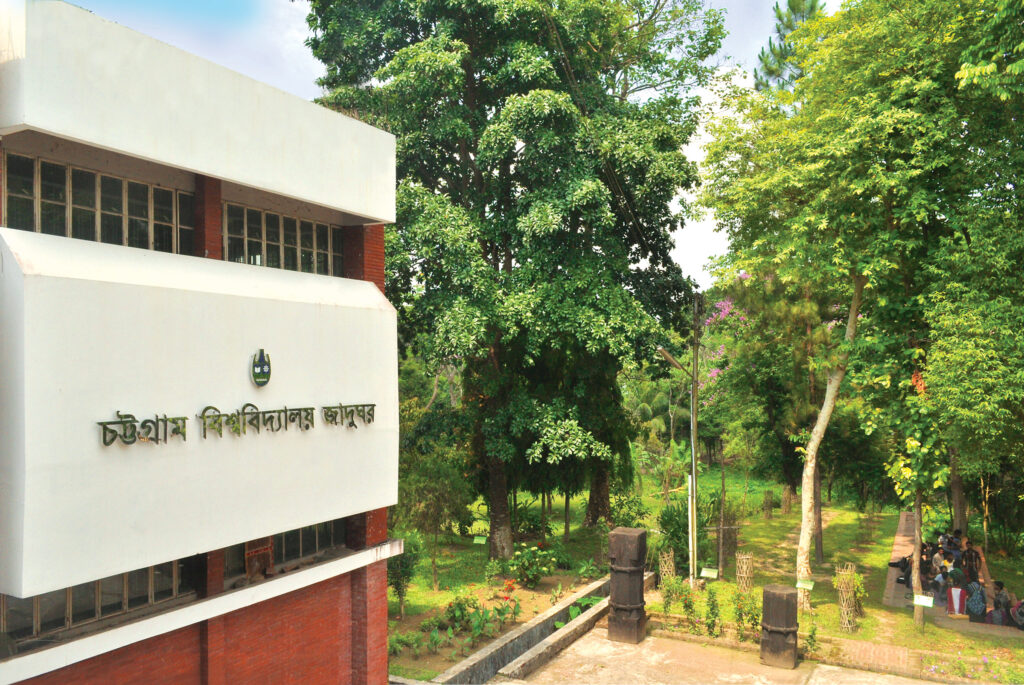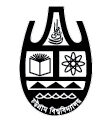
CU museum at a glance
The Journey of Chittagong University Museum
The museum is a cornerstone of a nation’s identity and a repository of its cultural heritage. As an institutional museum, the Chittagong University Museum (CUM) is the first of its kind in Bangladesh. While partly traditional, it is primarily an academic research museum, offering scholars resources on history, art, architecture, heritage, museology, literature, sociology, anthropology, and memorials of the Liberation War, among other fields.
The museum formally began its journey in 1973, though the concept was first envisioned in 1966 by Professor Azizur Rahman Mallick (1918-1997), the founding Vice-Chancellor of the University of Chittagong. Prior to joining Chittagong University, Professor Mallick was a history professor at Rajshahi University, where he also served as curator of the Varendra Research Museum. This likely inspired his vision for establishing a museum at
Chittagong University. Another source indicates that the idea for a museum emerged during an exhibition in the Department of History, where 24 artifacts were displayed to mark the University’s inauguration on November 18, 1966.
As a busy administrator, Dr. Mallick entrusted the realization of this vision to Dr. Abdul Karim, then Head of the Department of History and a distinguished medievalist, numismatist, and epigraphist. Before the formal establishment of CUM, the museum project remained active within the History Department, where it functioned as the Department of History Museum. Professor Karim’s student, Shamsul Hossain, played a key role in bringing the museum to life and became its founding Assistant Curator.
Dr. Mohammad Zahidur Rahman
Professor, Department of History, University of Chittagong
and Director, Chittagong University Museum
CU Museum
CU Museum (First Floor)
Action Plan of CU Museum
What follows is a list of what is to be done in 2024 – 2026
- Website Development: Digitized Gallery, Books, etc.
- Organizing seminars and symposiums regularly.
- Chittagong Studies by exploring the existing materials available in the museum.
- (a) Chattogram: Gateway to Bangladesh;
- (b) Arab contacts, rise and spread of Islam in Chattogram: Independent Sultans and the Mughals;
- (c) Foreign invasions: Arakanese, Tripuri, Mughals, and European (Portuguese, Dutch, French and British) occupation;
- d) A survey of the mosques, and saintly shrines of Chattogram;
- e) A field survey of the Sultani, Arakanese, Portuguese, Mughal, and British settlements in certain parts of Chattogram;
- f) Ship-building enterprise in Chattogram;
- g) Anti-colonial uprisings: 1857- the 1930s;
- h) Anti-colonial struggles: Language Movement to Bangladesh War of Independence;
- i) Collection of hand-drawn and digital old Maps of Chattogram (displaying the territorial outlines over time);
- j) Collections of newspapers, little magazines and sundry publications in Chittagong;
- k) Surveys of language, folklore and other cultural products with special reference to the folk music of Chattogram.
- 4. Bangladesh Studies:
- (a) Bangladesh from the early days to the Independence War (through the lens of the Chittagong University Museum);
- (b) July Uprising Digital Archives
- Collecting more artifacts and developing digital resource facilities
- Exchanging programs with the museums of Bangladesh and beyond
- Sufi Corner
- Biopic: Nalini Kanta Bhattashali, Abdul Karim ShahityaVishrad, Historian Abdul Karim
- Museum Garden: A Beautification Initiative
Chittagong University Museum Rules

